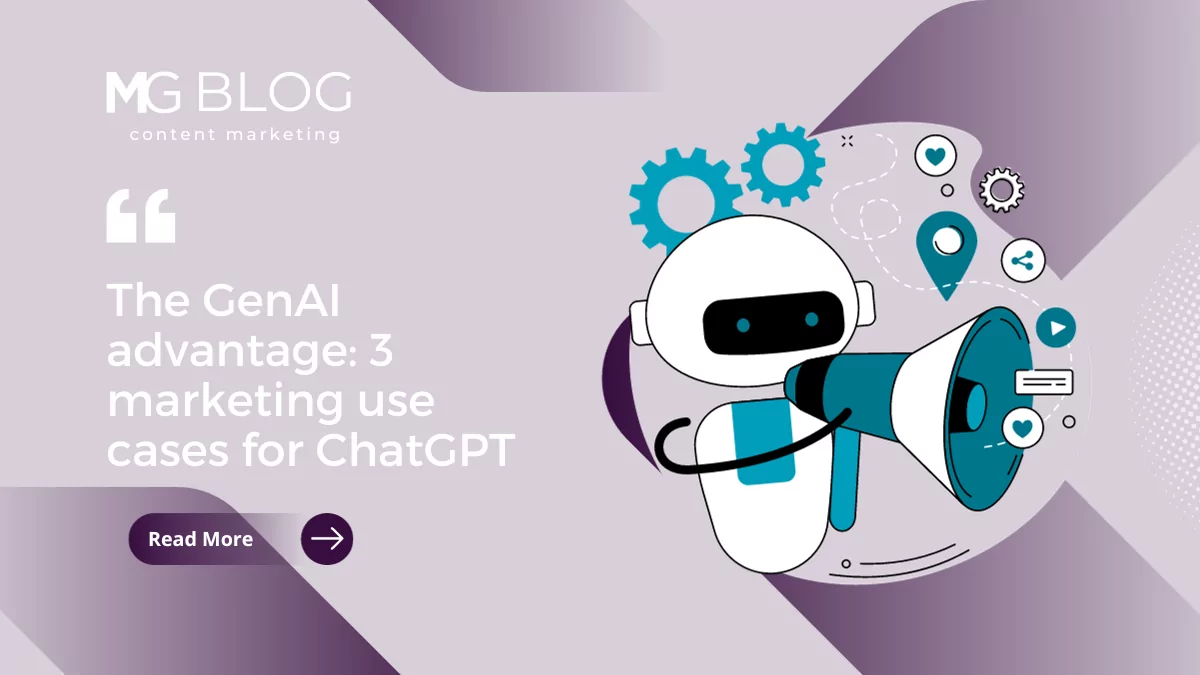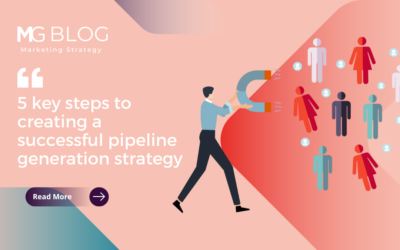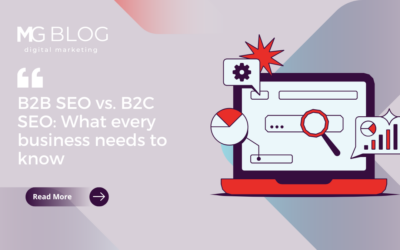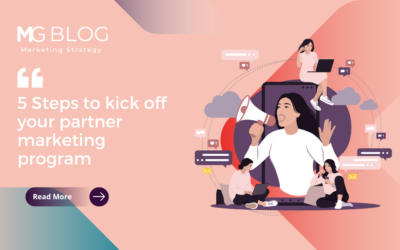
When it comes to GenAI adoption, marketing is leading the way.
According to a recent study by Statista, 37% of marketing and advertising professionals have used AI tools to assist with work-related tasks – the highest of any industry surveyed.
Salesforce found that 51% of marketers are currently using generative AI professionally, with another 22% planning to use it very soon. That’s an incredible rate of adoption for a tool that, ironically, hasn’t done much marketing for itself.
So why are marketers jumping on board so quickly? I started by asking ChatGPT. After defining a few marketing use cases for me—content generation, SEO, lead qualification, and customer service—it wrapped up its response with this assessment:
“In summary, the unique combination of content generation, personalization, adaptability, and efficiency makes GenAI particularly useful in the dynamic and creative field of marketing.”
It’s not wrong. The marketing profession requires a unique blend of creativity and data-driven research and analysis—two functions that natural language processing tools like ChatGPT can deliver value across. But it’s one thing to talk about it and it’s another to actually put the tool to the test, which is what we did when we conducted our Merritt Group ChatGPT pilot project earlier this year.
We didn’t use it to inform or create any client work, but we did encourage our super users to test and simulate potential use cases in a secure sandbox environment with strict adherence to confidentiality and privacy guidelines.
Merritt Group’s GenAI Pilot Project Takeaways
Our MG tiger team put ChatGPT-4 Plus through the paces over the course of three months. Overall, our group was pleasantly surprised. Below are the top three GenAI use cases that emerged from our experimentation.
1. Market Research: The vast majority of our testing team regularly used ChatGPT for research purposes, prompting it for information on emerging technology categories or trends. Overall, we found significant value in its ability to serve as a centralized starting point for quick answers—like Google, Wikipedia, and Gartner rolled into one.
The biggest challenge was that, at the time of testing, ChatGPT had only been trained on data up until September 2021, so it wasn’t helpful regarding new and real-time industry developments. There were a few accuracy missteps as well, and our team found a lot of value in asking ChatGPT to cite its sources to double-check and verify findings.
ChatGPT has since been trained on current data and there are plugins available in the Pro version that can scrape the web real time. Regardless, we’d still recommend fact-checking any GenAI-driven outputs before incorporating them into your marketing materials.
Overall, we found that Chat-GPT provided a fast starting point for our staff to get up to speed on complex issues in an easily digestible way.
2. Content Development: Content creation tends to be the use case most cited in discussions of GenAI in marketing, envisioning machines churning out compelling white papers and ad copy with a click of a button. What our team found is that we’re not there yet.
When asked to produce original content, the results felt generic and bland. It felt machine-generated and struggled to structure complex arguments or compelling, persuasive rhetoric. Precise prompting and follow-up questions helped to improve the results, but at this point, it’s best at high-level overviews, outlines, and summaries.
An unexpected area where it shined was in “content massaging.” Many of our testers found value in sharing existing copy with ChatGPT and allowing it to be an editor—making suggestions on sentence structure, grammar, word choice, and flow. Our team rarely thought all of its suggestions made sense, but it served as a helpful real-time editor delivering recommendations that warranted consideration.
3. Brainstorm Buddy: The biggest positive surprise of the pilot was the value our team found in using ChatGPT for brainstorming and creativity. Much like the editing function described above, the tool became an essential sounding board for folks as they were building messaging, finding new words or phrases for ad copy, and coming up with headlines.
So much of marketing is finding new and more compelling ways to describe concepts, and that requires collaboration. GenAI isn’t going to replace the power of a group of creative people in a room together, but it became an effective on-demand brainstorming companion for our team when they were stuck or needed inspiration.
Despite some current limitations, our pilot project team unanimously agreed that ChatGPT is incredibly powerful and worthy of incorporating into our day-to-day professional lives. During our testing, we were also very aware of the fact that this is the worst it’s ever going to be. As Greg Brockman, President & Co-Founder of OpenAI said: “The most amazing fact about AI is that even though it’s starting to feel impressive, a year from now we’ll look back fondly on the AI that exists today as quaint & antiquated.”
This is just the start of our experimentation with ChatGPT and other GenAI tools to understand how they can power new levels of efficiency, scale, creativity, and accuracy across digital, design, and content. As we research applications, we’re focused on the use case identification questions outlined by the Marketing Artificial Intelligence Institute:
-
- Is it data-driven?
- Is it repetitive?
- Is it predictive?
- Is it generative?
Stay tuned as we are going to be continuously posting our findings right here. We’d love to learn what you’ve tested and how you’re finding value in AI-powered marketing tools.
How have you used GenAI in your own marketing efforts? Are there any other use cases we should try?



